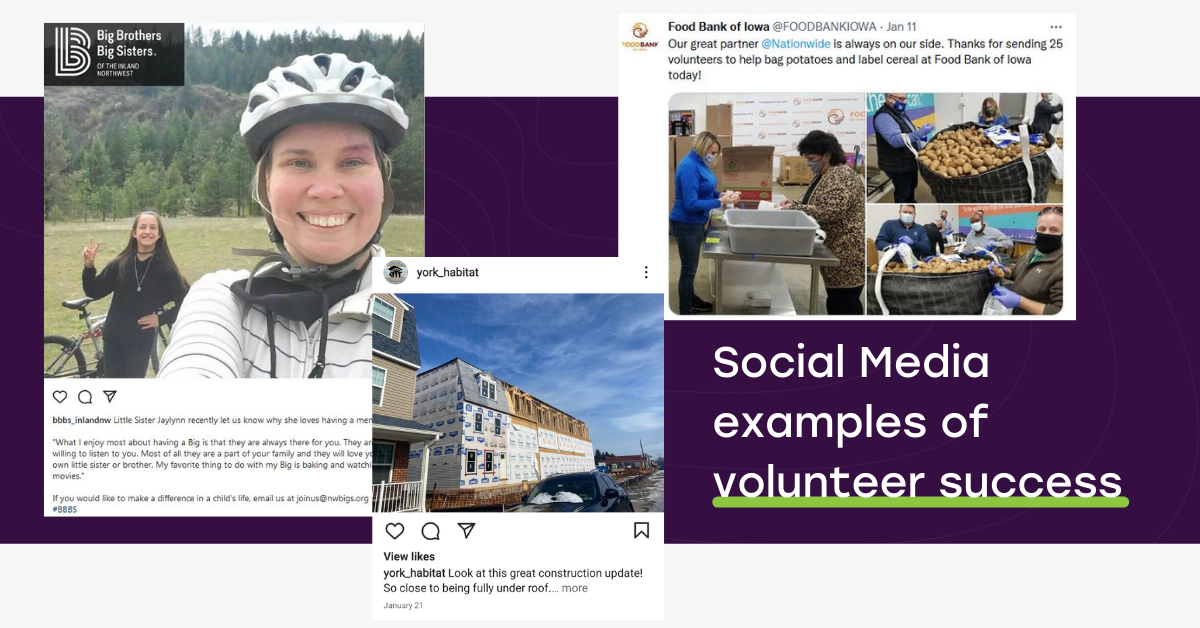Volunteers are the heartbeat and lifeblood of any successful nonprofit organization. Their invaluable contributions bring events to life, drive fundraisers, and make a tangible difference in the lives of those in need. Whether they are building homes with Habitat for Humanity or organizing a spring walk fundraiser, it is crucial to prioritize volunteer satisfaction to ensure a positive and fulfilling experience.
In this article, we will explore the keys to improving volunteer participation, focusing on essential elements such as effective communication, understanding, support, and genuine care. By delving into each of these aspects, we can unlock the full potential of volunteer engagement and create a lasting impact in our communities.

Communication With Volunteers
Effective communication plays a pivotal role in nurturing relationships built on care and concern, making it a vital aspect of volunteer management. It serves as a foundational thread that interconnects various steps in the volunteer engagement process. But why is communication particularly crucial when it comes to volunteers?
Volunteers are drawn to nonprofit organizations due to a genuine interest or personal connection to their mission and cause. Understanding this intrinsic motivation is essential as it forms the basis for cultivating a meaningful connection. By establishing open lines of communication, you can actively engage volunteers, address their concerns, and align their expectations with the organization’s goals.
However, effective communication goes beyond mere conversation, especially in larger organizations where personal interactions with every volunteer may be challenging. In such cases, alternative communication options can prove invaluable in facilitating meaningful engagement. Utilizing tools such as regular newsletters, volunteer forums, online communities, and social media platforms can help bridge the communication gap, ensuring that volunteers feel informed, connected, and valued.
Fostering a culture of effective communication not only strengthens relationships with volunteers but also enhances their overall experience, satisfaction, and dedication to the cause.
A great way to increase participation in new volunteers is to have an initial questionnaire or volunteer application to get to know your volunteers.
Consider including questions such as:
- Why do you volunteer?
- Do you know other volunteers?
- Are there specific events, programs, or initiatives you want to volunteer for?
- Do you have any special skills?
- What are your hobbies?
- What is your preferred channel of communication?
- Do you have any questions about volunteering?
- Have you volunteered with other organizations in the past (and which one(s))?
Once you have compiled the responses, there is a lot you can do with this information. First, add the responses to your CRM database which ideally connects with your volunteer management software such as is the case with Giveffect. Next, segment or group volunteers by similarities such as interests, skills and availability. Use these groups to engage by sharing volunteering opportunities that are relevant to their interests or require their special skills. By communicating and sharing personalized information that is most relevant to your volunteers you build trust between your organization and your volunteers. Trust creates a positive experience and increases engagement and retention. also increases engagement. In addition, it allows you to create an atmosphere to share other ideas to get the most engagement out of your volunteers.
To maintain a strong connection with your volunteers, be sure to consistently seek their feedback and understand their experiences. By conducting regular polls and surveys, you can gain valuable insights into the effectiveness of your volunteer program. These feedback channels not only provide an opportunity to identify elements that volunteers appreciate but also shed light on areas that may require improvement. The key lies in wholeheartedly embracing the feedback received and implementing necessary changes. By actively responding to volunteer input, you can enhance their satisfaction, foster long-term engagement, and ultimately boost volunteer retention.
Be sure to continue to poll your volunteers to keep a pulse on their experience. From these polls, you can also gain insight into how well your volunteer program is doing. You may discover certain aspects of your volunteer program that are loved, and you also might learn of areas for improvement. The key is to take the findings to heart and make changes where it is necessary which will help with volunteer retention.
Real Example of How Surveys Can Improve Volunteer Engagement in Your Nonprofit
One great example of this is a study done in Colorado (https://www.outtherecolorado.com/news/study-finds-heavy-toll-on-colorado-search-and-rescue-offers-fundamental-changes/article_ce8a501a-a3a3-5a21-b52c-6e79e7705948.html) of the nonprofit that handles wilderness search and rescue operations. As a part of the study, they did two surveys and found that there was a heavy toll on volunteers. Volunteers dedicated more time than other states on average and paid a lot of money out-of-pocket for supplies.
“Researchers calculated more than two-thirds of Colorado’s search and rescue volunteers were at risk of burnout,” according to a report on the study. This is a crisis if you do rely on nonprofit volunteers.
The report went even further. They conducted interviews and discussed solutions, but the surveys were key tools for unlocking candid feedback on where the problems that desperately needed to be addressed.
You can start your own survey to assess the culture around your own volunteers, and we can help you get started. Learn more about questions you should be asking in our FREE QUESTIONNAIRE TEMPLATE in Google Forms:

Understanding Your Volunteers
Volunteers not only have to want to be there for their own reasons but also to understand why the nonprofit exists and the services it provides. Sometimes, tension is created between the assumptions volunteers have and the realities of what a nonprofit actually does.
Communicate your organization’s purpose early and often. Frequently the most valuable lesson is to educate using examples. Sharing a success of a nonprofit is a great way to share both the goals and some of the end results of the impact of your nonprofit.
If you’re a Food Bank, share stories about how much food you have provided to the community and the stories about the families that you have helped. Seeing the impact of your services provides a great context for current and future volunteers about expectations of success and service.
Social media is a fantastic way to share information with your community, including your volunteers. Sharing your victories in real-time can give your volunteers both a sense of value and pride in their work and accomplishments. And that includes volunteers who worked on the project being shared or those that may be working on a project culminating later. This is a great way to increase volunteer participation!
Real Examples of Victories Shared Online by Nonprofits
Next, let’s discuss expectations of the work needed and the effort needed to produce these expected results. Just looking at a Habitat for Humanity home, doesn’t mean you understand the full amount of work and labor that goes into construction.
These discussions can be unique to every volunteer based on their needs, availability, and skills. Everyone should have a clear understanding of the individual goals and how they relate to the overall goals of the nonprofit. A sense that you’re all working on the same team, for the same goals and outcomes, can be vital to increasing volunteer participation.

Supporting and Caring for Your Volunteers
Your nonprofit organization can demonstrate appreciation for the dedication and contributions of your volunteers through various supportive and caring initiatives. While a classic volunteer pizza party is always a crowd-pleaser, it takes a lot more than lunch to ensure comprehensive support for your volunteers.
First and foremost, organizations must prepare volunteers for success. This entails equipping them with the necessary tools, both physical resources and relevant training. Volunteers should feel confident and knowledgeable in their roles. For instance, if your volunteer tasks require specialized training, consider conducting training classes to impart the essential skills. Habitat for Humanity, for example, offers Habitat Learns, an online training program covering construction basics, housing finance options, and effective leadership within the organization. While you may not need to develop an entire training portal, establishing a structured training program and assembling helpful resources can significantly contribute to setting volunteers up for success at all levels.
To foster leadership and strengthen bonds among volunteers, consider implementing a system that designates experienced volunteers as teachers or mentors. This approach allows volunteers to assume leadership roles while building meaningful connections within the volunteer community.
Additionally, matching volunteers with tasks that align with their existing skills can reduce the need for extensive training and enhance their comfort level. For instance, if you’re constructing a home, leveraging the expertise of a volunteer with home-building skills and experience provides a valuable advantage. This experienced volunteer can not only contribute directly but also serve as a trainer for others, creating a knowledge-sharing dynamic within your volunteer team.
By implementing these strategies, your organization can prioritize volunteer success, create a supportive environment, and maximize the skills and potential of each volunteer.
Surveys are not just for the start of a Volunteer experience
Consistently conducting surveys throughout the volunteer experience and demonstrating responsiveness to feedback will showcase your organization’s commitment to valuing volunteer opinions. And action ensures their voices are truly heard. It is essential not only to acknowledge their concerns but also to take appropriate action to address them effectively. Even a simple affirmation that their feedback has been acknowledged can go a long way in making volunteers feel valued and respected.
Furthermore, celebrating successes and sharing volunteer stories is a powerful way to demonstrate appreciation and highlight the significance of their contributions. By publicly recognizing and celebrating their achievements, you communicate genuine excitement and gratitude for their efforts. This not only boosts the morale and motivation of individual volunteers but also generates a sense of collective excitement within the nonprofit community. When volunteers feel supported and recognized, they are more likely to continue supporting your organization and its mission wholeheartedly. It fosters a positive cycle of engagement and dedication, creating a thriving environment for both volunteers and the nonprofit as a whole. When volunteers feel supported, they are more likely to continue to support you and your mission.


